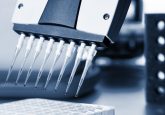Sniffing out superbugs – a potential new tool to detect infection
Recent research at the University of Leicester (Leicester, UK) has led to a new tool with the potential to rapidly detect a prevalent superbug. A team of scientists used MS to develop an electronic nose that can identify the unique ‘smell’ of Clostridium difficile, a highly infectious bacterium that can affect the digestive system.
Spores of C. difficile are expelled in the feces of infected individuals, commonly people who have been treated with antibiotics. These spores can then survive for weeks, or even months, on objects and surfaces.
Alcohol hand gels that are used routinely in hospitals and healthcare facilities are not effective against C. difficile and, in these facilities, the bacterium is mainly spread by the hands of healthcare workers. The rapid and accurate detection of the bug is therefore a primary concern in healthcare environments.
The new research, published online in the journal Metabolomics, has demonstrated that it may be possible to ‘sniff out’ the bacterium. The university scientists measured the volatile organic compounds given out by different strains of C. difficile; they found that several displayed characteristic levels of methanol and sulfur compounds, detected by MS.
These unique chemical fingerprints for different strains of C. difficile are of particular interest. Existing test methods do not usually provide strain information, yet different strains of the superbug may require tailored treatments. Therefore, the possibility of developing a tool that can not only rapidly detect an infection but also identify the type of infection is particularly promising.
However, the study did not go into the clinical practicalities of using the method. Paul Monks from the Department of Chemistry at the University of Leicester (Leicester, UK) , a member of the research team behind this work, stated: “We do not underestimate the challenges in sampling and attributing C. difficile volatile organic compounds from fecal samples.”
Andy Ellis, who also participated in the research, additionally highlighted that further investigation would be necessary to explore the possibility of taking the technology from the lab to the bedpan. He explained: “The different strains of C. difficile have significantly different chemical fingerprints and with further research we would hope to be able to develop a reliable and almost instantaneous tool for detecting a specific strain, even if present in very small quantities.”
Source: Scientists develop ‘electronic nose’ for rapid detection of C-diff infection; Kuppusami S, Clokie MRJ, Panayi T, Ellis AM, Monks PS. Metabolite profiling of Clostridium difficile ribotypes using small molecular weight volatile organic compounds. Metabolomics doi :10.1007/s11306-014-0692-4 (2014) (Epub ahead of print).





